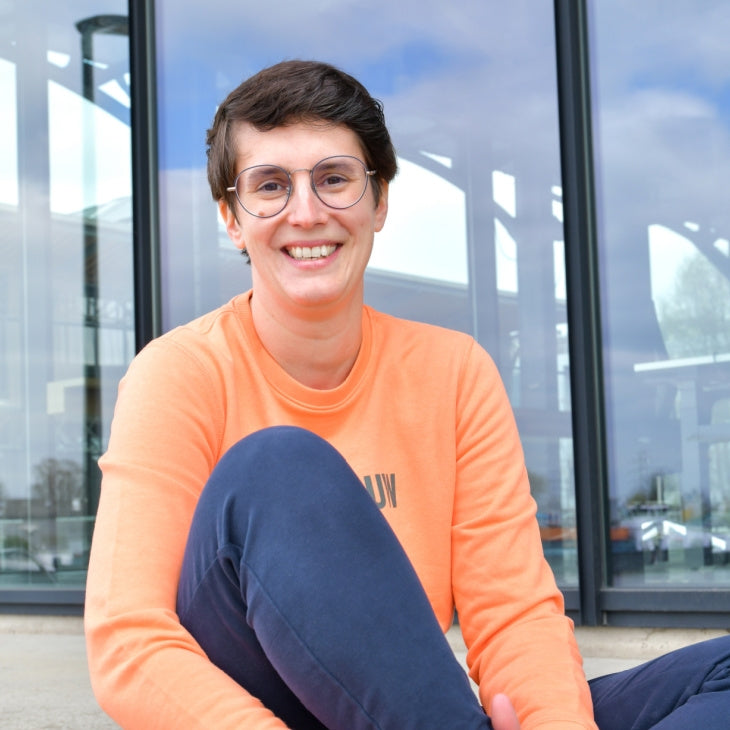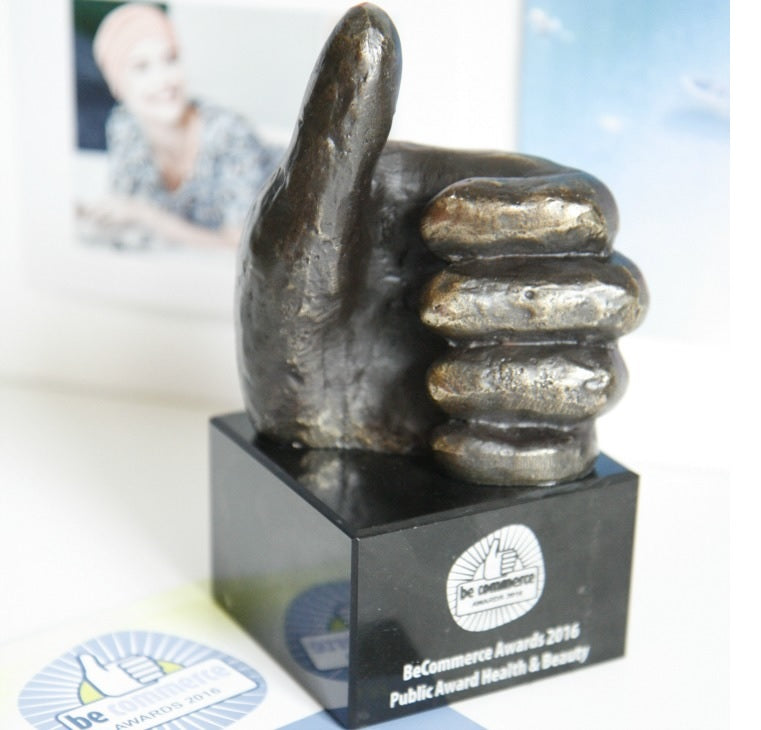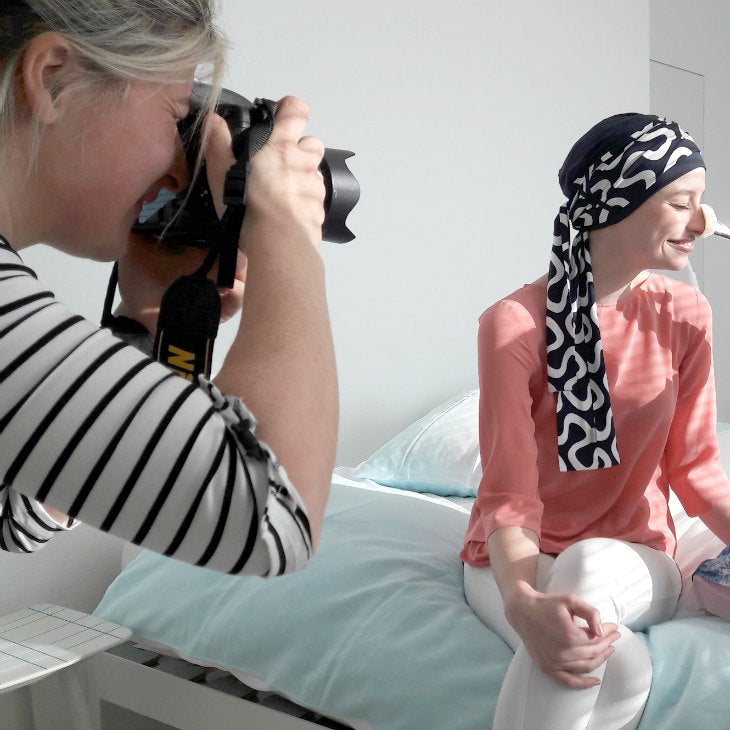Exercising after cancer lowers the risk of recurrence. It also makes you feel mentally fitter. But don’t just jump in headfirst. Pace yourself! Listen to your body! How do you do that, with all that fatigue in your body and worries in your head? We asked Sarah Soenen, physiotherapist and experienced onco-rehabilitation coach.
Sarah, you had leukemia yourself at the age of 4, and now you’ve made onco-rehabilitation your profession. Coincidence?
Not really. After my treatment, as a little girl, I already knew what I wanted to be. A cyclist in summer and a doctor in winter (laughs). Years later, I chose two in one—something medical and something sporty—and became a physiotherapist. For my graduation project I studied the influence of sport and exercise on quality of life in adolescents after cancer. It always fascinated me. At Sint-Lucas Hospital in Ghent I had the chance to help build a rehab program for breast cancer patients. That got the ball rolling. Now I also offer individual onco-rehabilitation outside the hospital, and the fulfillment it brings is something I could never give up!
Why is exercise after cancer so important?
We all know quality of life takes a hit during such an exhausting treatment. Physically, people struggle most with fatigue. Many also complain about muscle and joint pain from medication. And then there’s the mental side: fear of relapse, the “what now?” question, worries about family or work… Exercise doesn’t just rebuild your fitness with all its physical benefits. Feeling fitter boosts your self-confidence, helps you believe in yourself again, and reduces overthinking. Exercise also gives you structure in your life again. Many people avoid exercise because they think it will make them tired, but it’s actually the opposite: by moving, you feel mentally better, and because your mind feels fitter, you’re more motivated to move.
And exercise also reduces the risk of recurrence, right?
Exactly. Several studies show that regular exercise reduces the risk of cancer returning. That’s a very important reason why people come to me for rehab after treatment. It also gives them a sense of control. If they can improve their outlook in this way, they want to grab that chance with both hands.
What tips do you give people who want to start moving—and keep it up?
What I tell my patients every single day: pace yourself! Set realistic goals and don’t push past your limits. People sometimes forget how much cancer and chemo take from your body and drain your reserves. Start as soon as possible after treatment. The longer you wait, the deeper the hole you’ll have to climb out of. I often see this in practice: people who stopped for over a year sometimes rebuild fitness more slowly than those who start soon after finishing treatment. And the number-one secret to sticking with it is simple: pick an activity or sport you genuinely enjoy. Exercising with others can be an extra boost. Dragging yourself alone through something you dislike? No one keeps that up. Schedule your sessions into your calendar—routine helps too.

Pacing yourself—that’s often the hardest part, right? “Listen to your body” is advice you hear all the time. But how do you actually do that?
It isn’t easy, especially for people who never exercised before. Even experienced athletes struggle to feel their “new” limits after cancer. In my practice I use two benchmarks: “what does exercise do to your heart rate” and “how do you feel afterwards?” Everyone I work with uses a heart rate monitor. We calculate their ideal zone. Sometimes I let them briefly go into the red so they feel what it’s like to cross the line. With this structured approach, they quickly learn where their limits are.
“How do you feel afterwards?” is just as important—stiffness, pain, fatigue. How stiff were you after the rehab session, and how fast did it fade? How tired were you, and for how long? The biggest challenge is cancer-related fatigue. Unlike regular fatigue, it doesn’t disappear with extra rest. It’s that crushing exhaustion that strikes out of nowhere and knocks you out.
That’s what onco-rehabilitation teaches: how to listen to your body and recognize signals. But I admit, many people find it tough. It’s a learning process with a “new” body. And one of my main tasks as a coach is slowing people down. They come out of treatment determined to jump back in, but their body holds them back—and that can be hard to accept.
So “learning to pace yourself” is the biggest advantage of an onco-rehab program?
It’s the foundation—rebuilding fitness while staying in tune with your body, with special attention to cancer-specific needs. That’s my role as a physiotherapist. But motivation is just as important. People need to enjoy coming and stay motivated. And don’t forget: a rehab appointment every two weeks also brings structure to your days. Many talk about the “big black hole” after treatment. The rhythm of chemo or radiation is gone, and suddenly you face an empty space. Exercise helps fill that gap and prepares you for your return to work. And the peer contact is a big plus too. No one understands you as well as someone who’s been through cancer. Though some prefer individual coaching—and that’s perfectly fine.

What are the best sports to get moving again after cancer without overdoing it?
Walking, cycling, and swimming. “The boring ones,” people say. But they don’t have to be boring! There are so many ways to make them fun. Go with friends, grab a drink afterwards, plan scenic routes, set little challenges for yourself in the pool… And for those who can’t do it alone, there are plenty of programs and trainers to help. Another tip: I often send people out with a step counter to motivate them to reach 10,000 steps a day.
You advise starting exercise as soon as possible after treatment. But what about during treatment?
It’s not always possible, but for those who can, exercising during treatment—or continuing if you were already active—is even better. Of course, it’s easier for seasoned athletes than total beginners. And it doesn’t have to be heavy workouts. Just walking or gentle cycling can already make a difference. We notice that fitness bounces back more quickly afterwards. You don’t start from as far back. Plus, exercise gets you outside, pulls you out of isolation.
Can everyone exercise again after cancer?
Everyone is different. Some have to deal with limitations after surgery, chemo, or medication side effects. I think of patients with a stoma, or women on hormone blockers after breast cancer. My job is to help them find the form of movement that works for them.
Expectations also play a big role. What do people want? Some are happy just being able to climb stairs without exhaustion. Others dream of cycling up Mont Ventoux in three years. It all starts with realistic goals. Cancer survivors often have to adjust their expectations. That’s not easy—lowering the bar. But accepting your limitations and finding something you enjoy within them is always better for body and mind than sitting on the couch brooding over what you can’t do anymore. I see it every day.

Feeling motivated to move after reading this?
- Talk to your doctor or nurse. Many hospitals run specialized rehab programs. Some health insurance providers also offer tailored exercise programs.
- Is your treatment further behind you, or do you prefer one-on-one guidance? Sarah offers onco-rehabilitation at the group practice K-fit in Ghent, but there are specialized physiotherapists, coaches, and professionals everywhere. Your doctor can recommend someone near you.










